When Tom Longboat and his fellow runners competed in races in the early years of the 20th century, they ran at distances measured in miles, yards, and feet. The marathon, for example, was 26 miles, 385 yards. In metric terms, the marathon measures at 42.2 kilometers. In this book, the imperial measurement miles, yards, and feet is used in order to conform to the standards of Longboats day. To convert the imperial measurement to metric terms, use the following table.
C HAPTER O NE

The Best Runner in the World
T o us, today, the race seems peculiar. It consisted of two fit young men running around the small track at Madison Square Garden in New York City 262 times. This event took place on the night of December 15, 1908, and it involved the two competitors circling the track time after time to cover the marathon distance of 26 miles, 385 yards (42.2 kilometers). With about four laps to go, one of the two Dorando Pietri of Italy pitched forward on his face, barely conscious and unable to muster one more step. The other runner, close to exhaustion, struggled on alone over the rest of the distance. When he crossed the finish line, he had been running for 2 hours, 45 minutes, and 5.2 seconds, and he won a prize of $3,750 The victorious runner was Tom Longboat of Canada.
For sports fans of the present, accustomed to quick, busy, high-energy action, more attuned to team games than individual contests, the race at the Garden comes across as the athletic equivalent of watching paint dry. But in the early years of the 20th century, such events as the Tom Longboat-Dorando Pietri race were all the rage. Fourteen thousand roaring spectators packed the Garden to cheer the runners that night, and hundreds more unable to buy a ticket for the sold-out event milled in the streets outside, impatient to learn the races outcome.
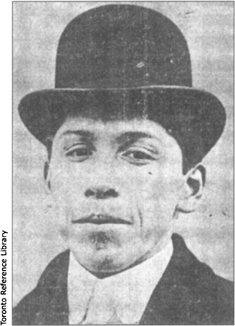
 Twenty-one and dapper, this is Tom Longboat on the eve of his first great professional victory over Italys Dorando Pietri at the marathon distance in New Yorks Madison Square Garden in December 1908.
Twenty-one and dapper, this is Tom Longboat on the eve of his first great professional victory over Italys Dorando Pietri at the marathon distance in New Yorks Madison Square Garden in December 1908.
These fans, unlike todays, preferred man-on-man rivalries to team sports, and they applauded endurance over style. They flocked to thirty-round boxing matches, two-mile single-scull rowing events, and, above all, to long-distance running races. There was a craze in North America for distance running in the years before World War I, and two-man races, like the one on the night of December 15, 1908, were the centerpieces of the sports enormous popularity. In the winters, these races were held in indoor arenas and in military armories. In the summers, they switched to large open-air stadiums, two-man competitions at such venues as the Polo Grounds in New York and the Hanlans Point Stadium on the Toronto Islands. More conventional distance events figured into the racing mix too; these were usually marathons featuring fields of many competitors running over roads on the outskirts of a city and into the downtown core. Spectators lined the streets and cheered themselves hoarse for the runners, especially for Tom Longboat.

In the age of the long-distance runner, Longboat was the greatest of them all. He won more races than any of his contemporaries, and he triumphed at every distance from three miles to the marathon. He seemed almost super-humanly tireless, ready to run any race at any time. In the six weeks after his 1908 victory over Dorando Pietri, he ran two more indoor marathons one in Buffalo, the other back in Madison Square Garden, Longboat won both, and as if to show how secure he felt about winning, he took a few days off between races to get married and take part in a wedding reception for hundreds of guests at Torontos Massey Hall.
Longboats running feats made him by far the best-known Canadian abroad during the first two decades of the 20th century and the most popular Canadian at home. His fellow citizens couldnt get enough of Tom Longboat. On an autumn Saturday in the first year of his growing celebrity, 1907, he set off on an exhibition solo run who could imagine such a thing today? that covered 3 5 miles from the city of Hamilton, east along Lakeshore Road, to the center of Toronto. Nearing the Humber River three-quarters of the way through the run, Longboat developed severe foot blisters and limped into an accompanying automobile. The police were horrified by Longboats withdrawal from the run. One hundred thousand of his fans had gathered along the route at the Toronto end, anxious for a glimpse of their hero. The police feared a riot if all that rewarded the peoples wait was a shadowy Longboat in the rear of a Model T They pleaded with him to return to his run, just for the last mile. Longboat obliged.
Its difficult to measure such an entity as public adulation, but Longboat was probably as idolized in his time as Wayne Gretzky was in his. Glory and grace touched both men in their different athletic performances, and fans responded to each with equal degrees of helpless admiration. Both men seemed accessible and friendly; nothing stuck-up about Tom or Wayne. And, in a satisfying coincidence, both came from the same part of the world Gretzky from the town of Brantford in Southern Ontario, and Longboat from the gently rolling countryside immediately to the towns southeast.
But it isnt helpful to pursue the Longboat-Gretzky comparison to its limits because one unbridgeable divide separates the two men: Gretzky is white while Longboat was Native. The gently rolling land where Longboat grew up was an Indian reserve, the Six Nations. It was a place where many people lived in drafty shacks, rarely earned a white mans wage, had bad teeth, and died young. Natives made up Canadas underclass, Longboat included, and no matter how much adoration the public heaped on him as an athlete, Longboat was never allowed to forget what he was and where he came from.
All he had to do, if he needed reminding, was look in the daily newspapers. Sportswriters routinely identified him by such insulting terms as the Redskin, Heap Big Chief, and the Injun. The Globe once pointed out, with apparently no conscious racial sneer intended, that Longboat possessed only the light veneer of the white mans ways.

Longboat was a Native, and it cost him. After his death in 1948, he was quoted by one of his sons as having advised years earlier: Dont go into running. Theres no money in it. Longboat was wrong; there was very good money in running, just not for him. The white men who managed Longboats career and promoted his races were mostly well-to-do businessmen before their associations with Longboat, and they were measurably more well-to-do after the associations ended. But the money Longboat earned with his magnificent running never seemed to stick to his own fingers. And after his retirement from racing, the best job he ever found was with Torontos City Street Cleaning Department. From 1927 to 1944. Longboat picked up garbage from the streets where his fellow citizens had once cheered him to the skies.


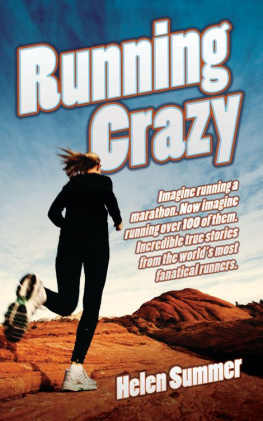
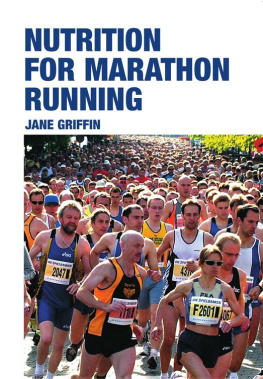



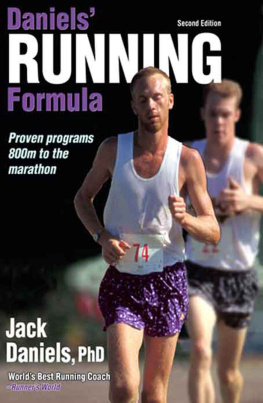
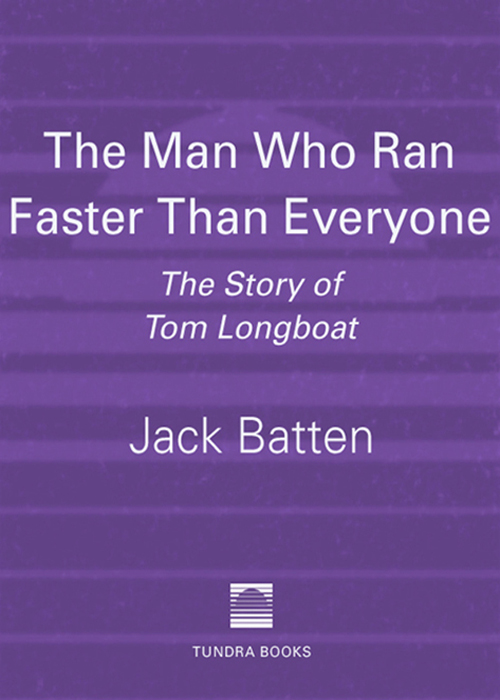
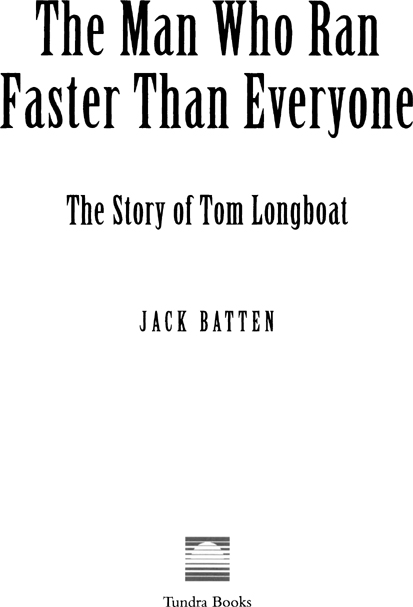


 Twenty-one and dapper, this is Tom Longboat on the eve of his first great professional victory over Italys Dorando Pietri at the marathon distance in New Yorks Madison Square Garden in December 1908.
Twenty-one and dapper, this is Tom Longboat on the eve of his first great professional victory over Italys Dorando Pietri at the marathon distance in New Yorks Madison Square Garden in December 1908.